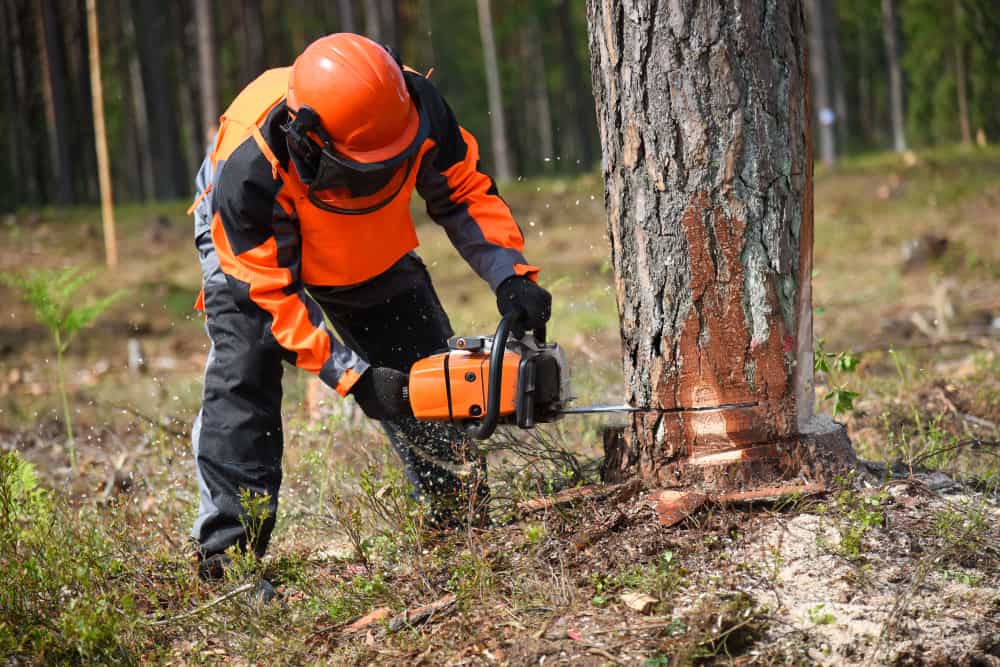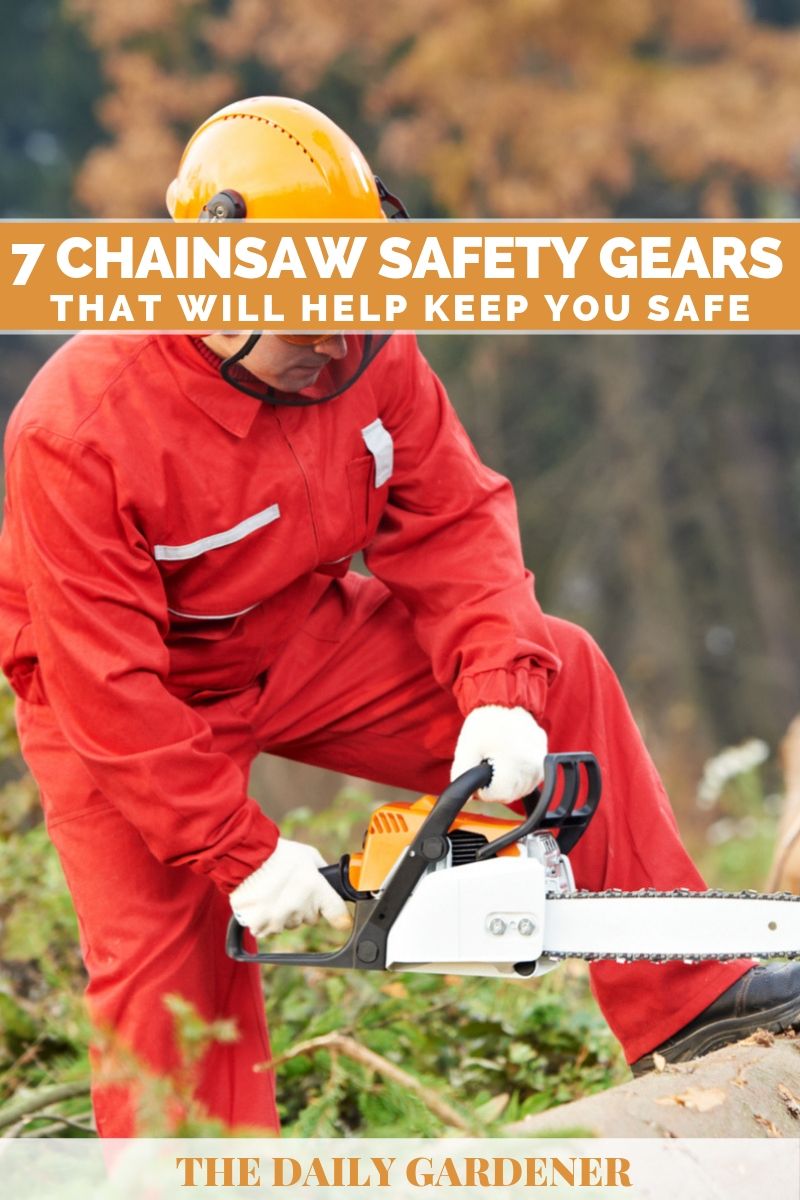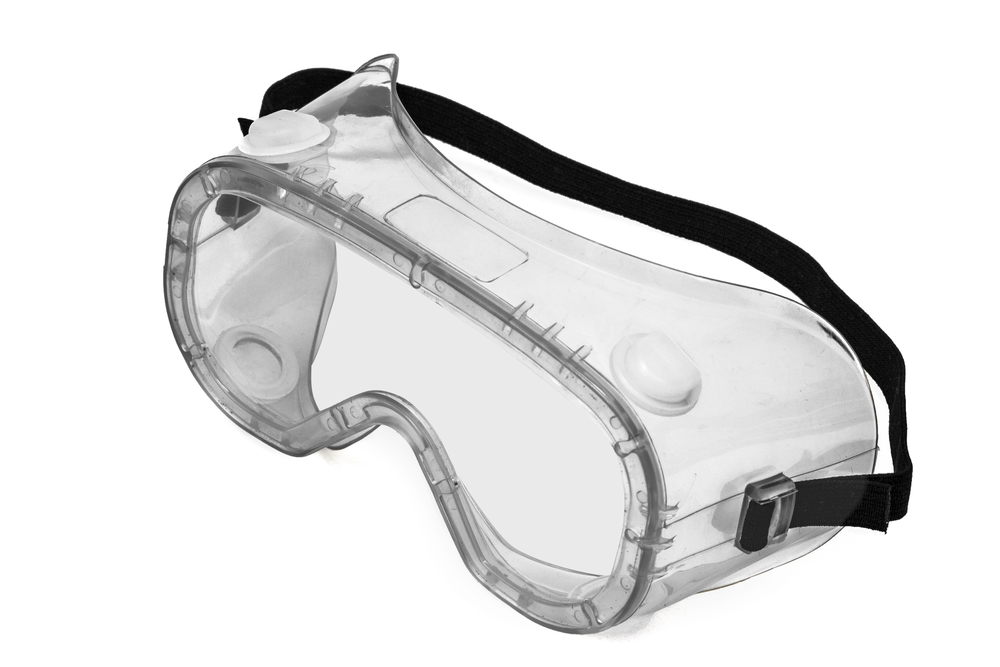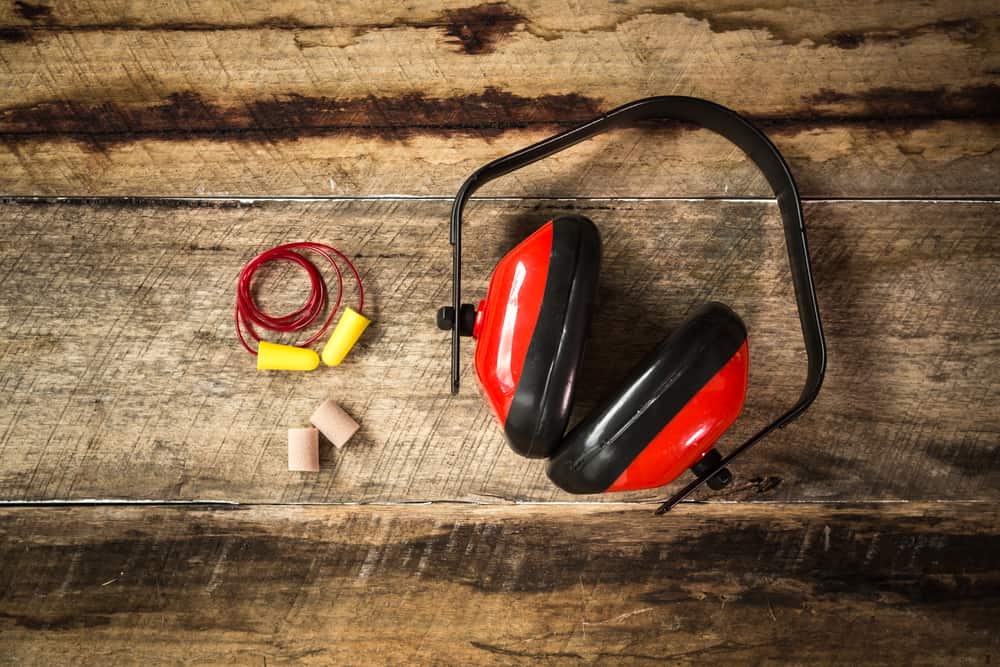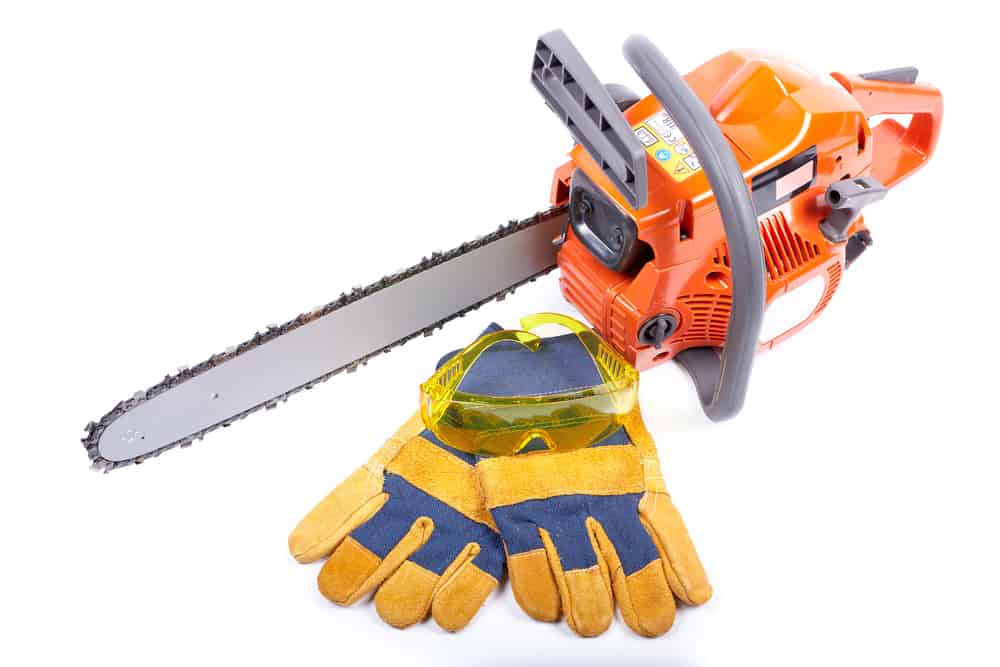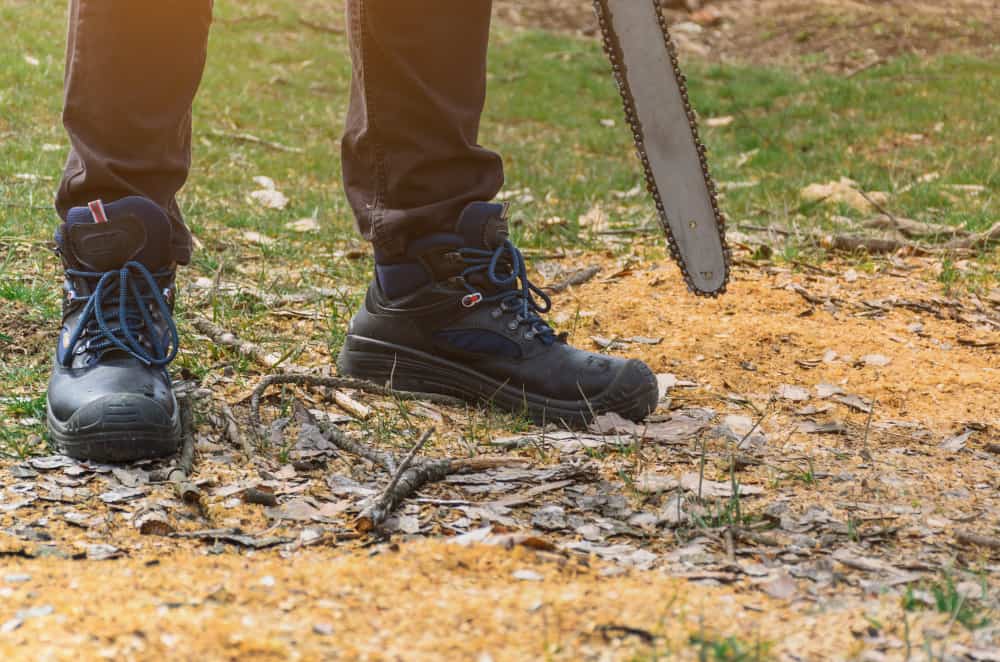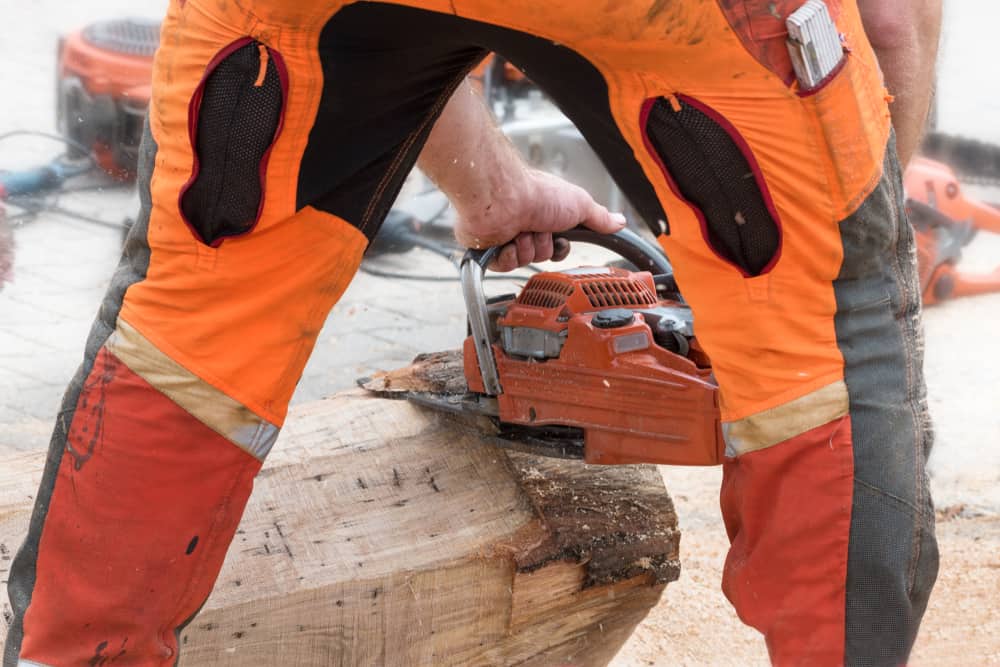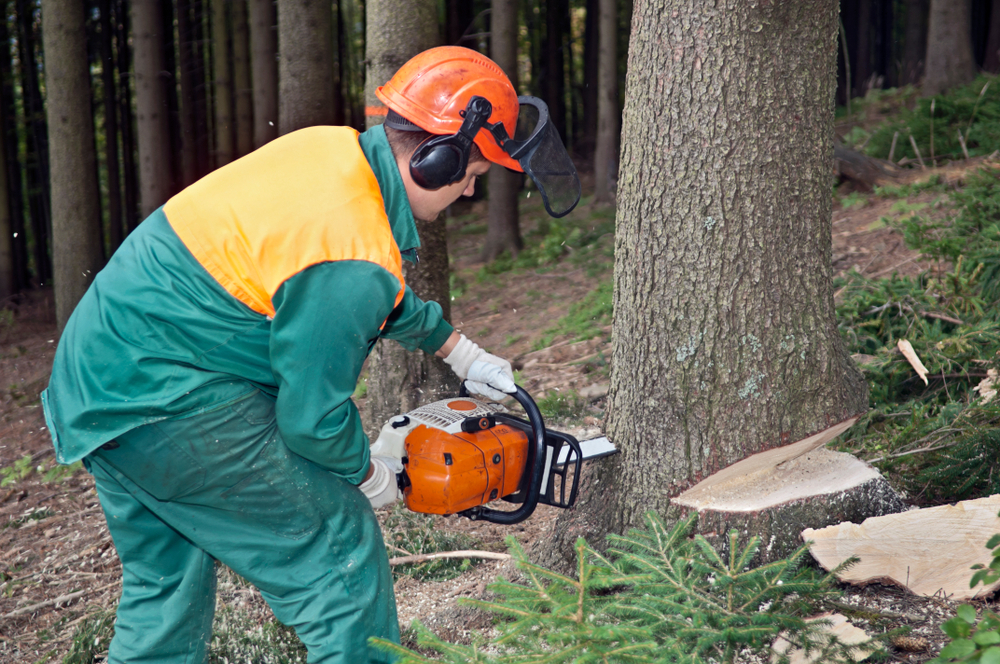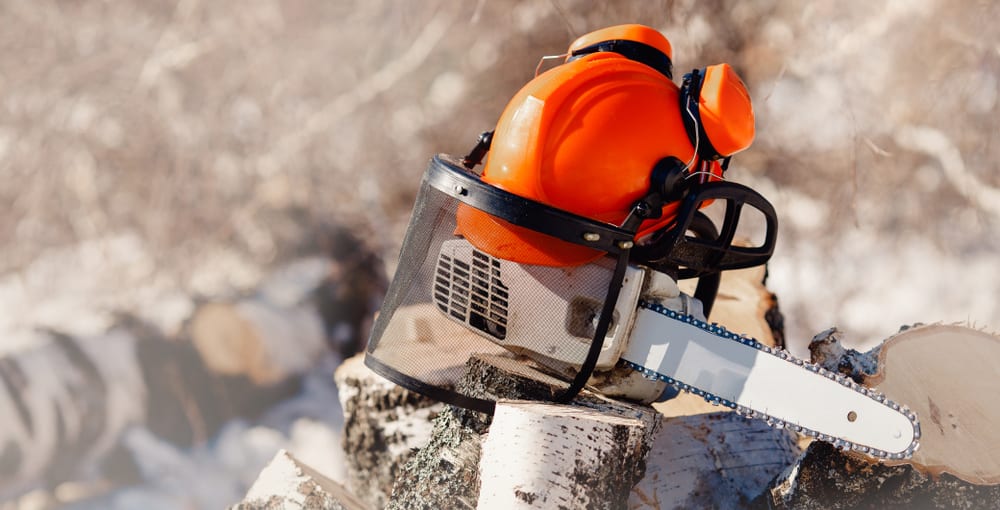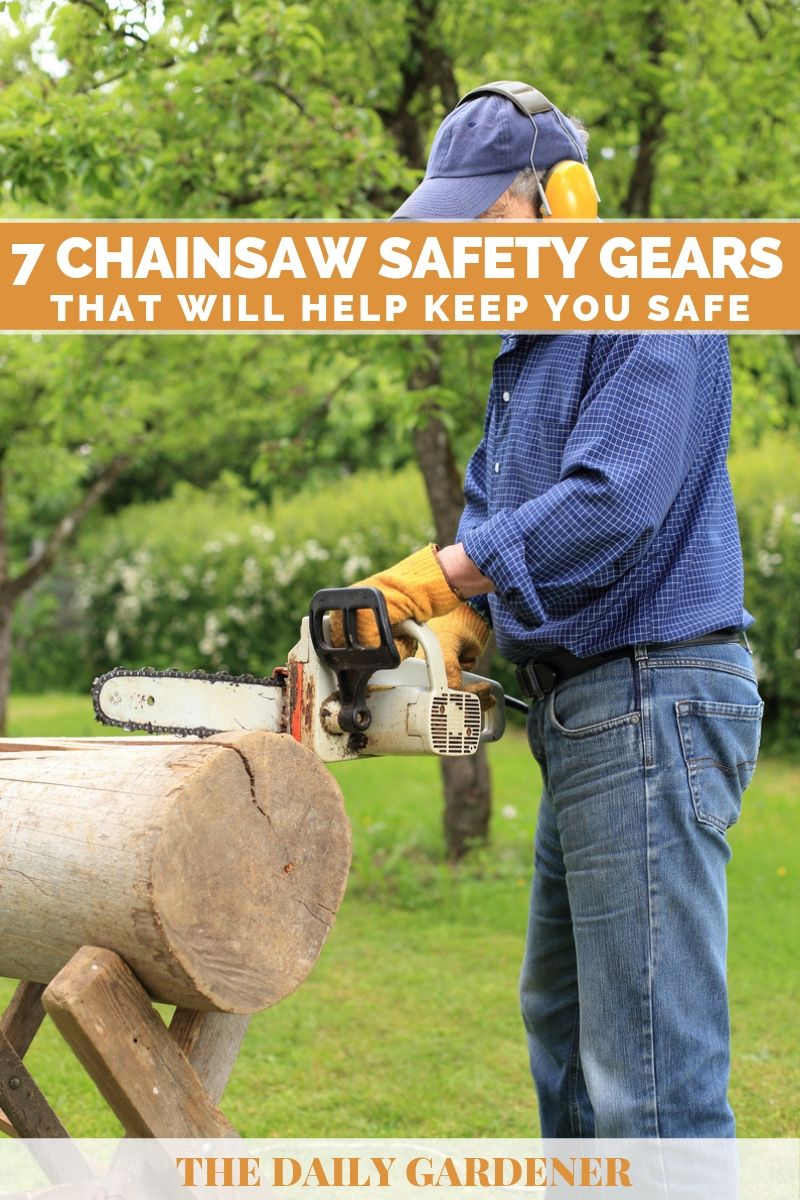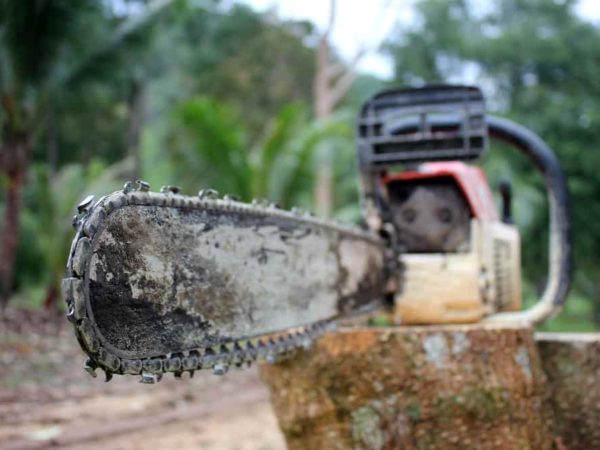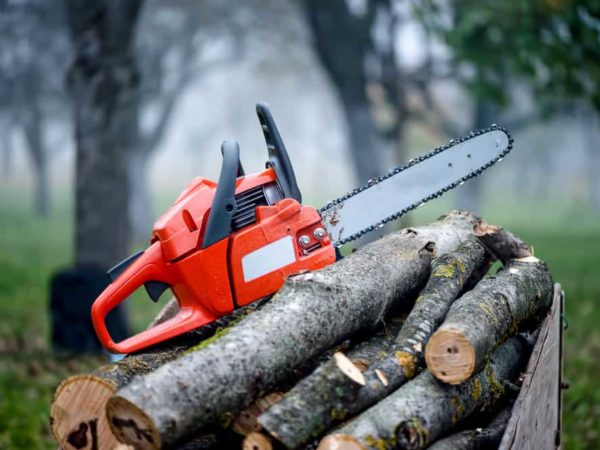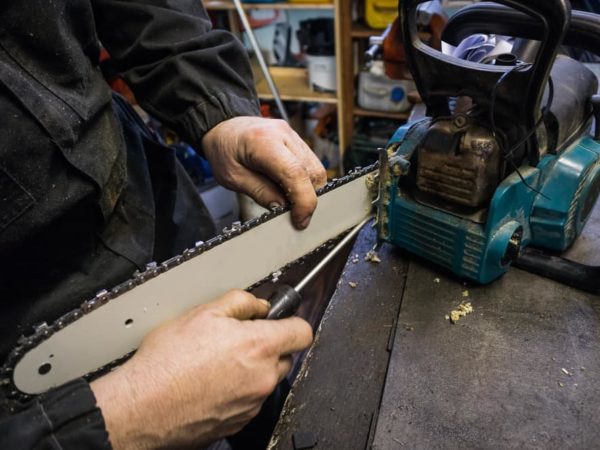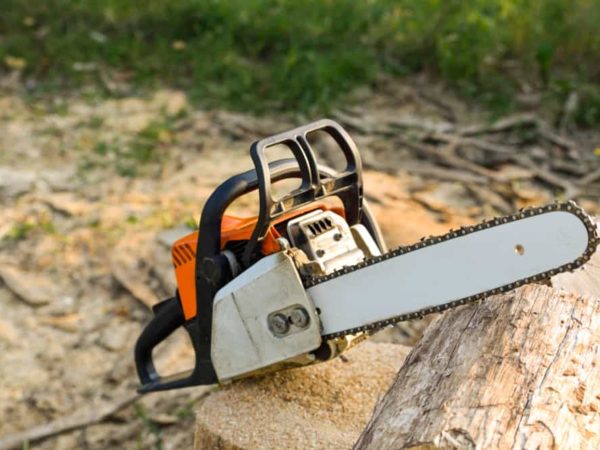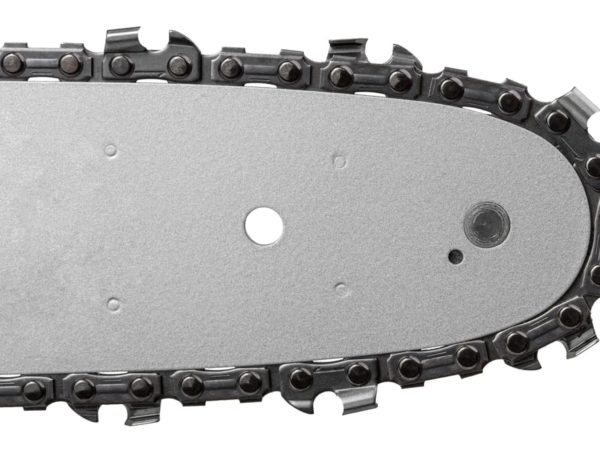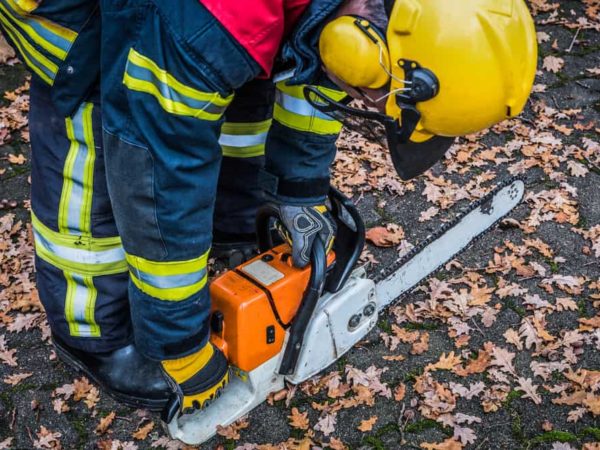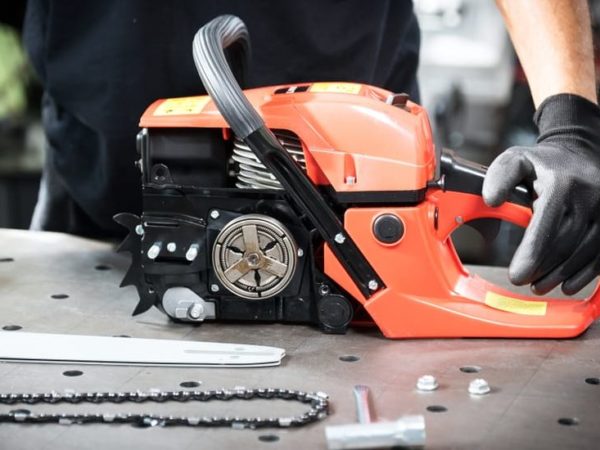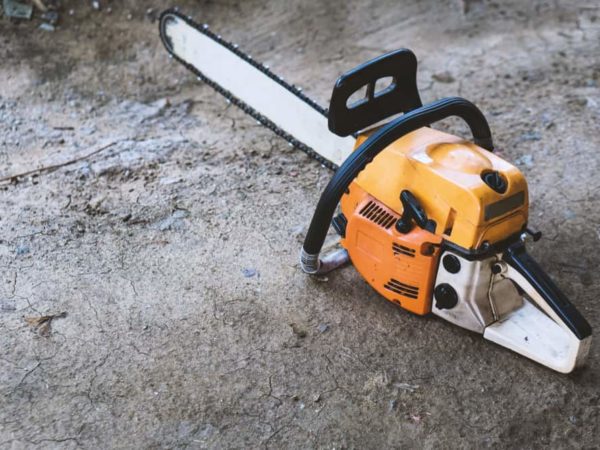Chainsaws can be invaluable and indispensable tools for felling trees, pruning branches and dealing with storm damage – and for many people, using a chainsaw can be a lot of fun too. However, they are also without a doubt one of the most dangerous tools you can own, and using proper safety equipment when operating one is essential.
To help you understand exactly what you need to wear – and why you need to wear it – here, we look at 7 items of chainsaw safety gear that will help keep you safe.
Table of Contents
1. Eye protection
The first vital piece of safety equipment you should wear when handling a chainsaw is eye protection. This is because chainsaws produce chips of wood that can fly up into your face – and when this happens, you are at risk of serious eye injury or even being permanently blinded.
Sunglasses or regular glasses are not good enough as they won’t provide adequate protection – always choose proper certified protective eyewear.
Safety glasses offer good protection, but there is still the chance of woodchips finding their way in through the gaps at the side. A better option is protective safety goggles that leave no gap around your eyes, helping reduce the risk of injury to the absolute minimum.
Remember, if you lose your sight, you can’t get it back, so there’s no point taking any risks with your eyes.
Another option is to wear a face visor – we’ll talk about that when we talk about head protection below.
2. Ear protection
Ear protection is considered necessary whenever noise levels exceed 85dB for any extended period of time. Since all gas chainsaws are likely to be well above this threshold, ear protection should be considered obligatory.
However, even with battery powered chainsaws, electric chainsaws or cheap chainsaws with less power, noise levels can still be high, and you should consider wearing ear protection whenever you use a chainsaw of any kind.
There are two types of ear protection you can use. The first is in-ear protectors. These are similar to the kind some people use when they sleep and are made of a kind of foam. You compress them in your fingers and push them into your ear where they regain their shape and block external sound.
The second type is over-ear protectors that cover your whole ear and are the kind that most professional chainsaw operators choose to wear.
Which type you use is up to you, but you should always have some kind of protection. If you are using a very loud chainsaw, you might even consider using both types together for even more protection.
Like with your vision, once your hearing goes, it won’t come back – so make sure you keep your ears safe.
3. Hand protection
Wearing proper gloves is also essential when working with chainsaws. Regular working gloves will protect your hands from flying woodchips, but by wearing a pair of specialized chainsaw gloves, you can give yourself extra protection against the chain.
Specialist chainsaw gloves should be flexible, but the back of the left hand should have protective cut-proof fabric to prevent injury in the event of the chain flying off the chainsaw and hitting your hand.
4. Foot protection
Proper footwear is also important when working with chainsaws. Many chainsaw boots are similar to regular work boots with steel toecaps but also incorporate protective fabric in the areas that may possibly come into contact with the chain.
Furthermore, the steel toecaps will protect your feet from any logs or branches that may accidentally fall on your feet as you are cutting.
Chainsaw boots are also available in a rubber wellington boot style – but with steel toecaps for extra protection.
The type you should choose depends on the conditions where you are working, with rubber boots being more suited to wet or muddy working conditions.
5. Leg protection
Proper leg protection is one of the most overlooked areas of chainsaw safety gear, but it is also one of the most important.
While most people intuitively understand the importance of eye or ear protection, chainsaw injuries to the legs are often seen as the kind of thing that happens to “other people” but never you.
However, it is important to understand that injuries to the legs are the single most common type of chainsaw-related injuries, and when they occur, they can be among the most horrific. The average chainsaw wound requires 110 stitches, and for these reasons, you should never operate a chainsaw without wearing a good pair of chainsaw chaps.
Chainsaw chaps are made of several layers of a material like Kevlar, the same stuff they use in bulletproof vests. When the chainsaw chain comes into contact with the chaps, the Kevlar fibers are drawn into the chainsaw’s mechanism, stopping the engine before it has the chance to do further damage.
If you are lucky, they will stop the blade reaching your flesh entirely, leaving you with just a bruise. However, even if the blade does cut through the chaps, the wound will be much less severe than it otherwise could have been.
To put things simply, we can’t stress enough how important chainsaw chaps are – and they are far less expensive than your medical bills will be if you have an accident.
Chainsaw chaps come in a couple of different styles. One of the most popular is apron-style chaps that protect the front of the legs and have straps on the back. These offer more ventilation while protecting the most common areas for injury but offer no protection to the backs of your legs.
Chainsaw “pants” that protect your whole leg are also available but can be extremely hot to work in. Most people will not enjoy wearing a pair when working during the hot months of summer.
A very important point to note is that chainsaw chaps are designed to protect you only once. If your chaps get “bitten” by your chainsaw, they have served their purpose and need to be replaced.
You can’t patch them up and use them again, so don’t be tempted to try. Just be thankful that you were wearing them, throw them out and buy a new pair.
6. Upper body protection
Protection for your upper body is also available. Although upper body wounds are less common than leg wounds, they can be just as devastating, so you should consider wearing safety equipment to protect you there too.
Chainsaw jackets function in the same way as chainsaw chaps and are made from the same materials. Wearing the correct upper body protection can save you from a serious, life-changing wound or even death.
7. Head and face protection
One of the most serious hazards when working with a chainsaw is the risk of kickback. This is when the teeth of the chainsaw snag or “bite” into whatever you are cutting, throwing the chainsaw back at you with a force so violent that you have no time to react.
Kickback can be responsible for leg or body injuries, but they can also throw your chainsaw right back into your face – with devastating consequences.
A good quality chainsaw helmet can provide you with some protection against this, so if you value your face and head, you should consider this another essential piece of chainsaw protective gear.
As well as protecting you from kickback, a chainsaw helmet with a visor can also offer protection to your eyes.
As long as a chainsaw blade is well-maintained and properly sharpened, it won’t create small particles of sawdust – rather, it will create larger chips of wood, as we have already mentioned.
With this in mind, if you wear a chainsaw helmet with a metal grille visor, this can be an acceptable replacement for safety goggles. This is because the dangerous chips that might fly up into your eyes will be too big to pass through the gaps in the grille.
General clothing tips
When working with a chainsaw, always choose comfortable clothing that gives you plenty of movement and flexibility but that is not baggy and loose.
Wearing excessively baggy clothing while operating a chainsaw is a very bad idea since it can get caught up in the chain and cause an accident.
Also remember that if you are suffering from the heat, you may become weak or lose your concentration – which can also lead to dangerous situations. Choose clothing that will keep you safe but that will also keep you in a good state for operating a chainsaw.
Never overlook safety when working with a chainsaw
Chainsaws might be pretty cool tools to work with for some people, but never forget how dangerous they can be. When working with a chainsaw, even a smaller model, always respect the tool and never let your concentration wander.
Chainsaw accidents happen, and the results can be disastrous. You may be lucky enough never to be involved in one, but by always wearing the correct safety equipment, you can help ensure that even if the worst happens, you can avoid injury or at least minimize the damage.
Don’t forget to pin it!

